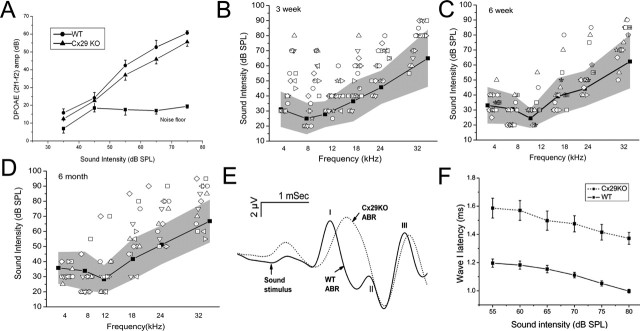Figure 5.
Assessments of the cochlear function for the Cx29−/− mice. A, Growth of the distortion product measured at 2f1 − f2, as a function of the intensity of primary tones (f1). Two-month-old adult mice were used. B–D, Hearing thresholds across a frequency range of 4–32 kHz measured by tone-burst-evoked ABRs for mice 3 weeks (B), 6 weeks (C), and 6 months (D) after birth. The scattered symbols are raw data obtained from Cx29−/− mice, and the individual animals are represented by different symbols. The plots give averaged ABR threshold obtained from littermate-controlled wild-type mice (filled squares connected by solid lines). The shaded areas represent a data range twice of the value of the SD above and below the averaged data. E, F, Comparison of click-evoked ABR waveforms obtained from wild-type (sold line) and Cx29−/− (dashed line) mice. Mice were between 3 and 4 weeks of age. The Roman numbers indicate the peaks in the ABR waveform. F gives the latency of the wave I as a function of sound intensity for wild-type (solid line) and Cx29−/− (dashed line) mice. Error bars indicate SE.

